ERD Commander 2002
|
|
Since the release of Windows 2000, Microsoft has significantly enhanced and improved the built-in system-reliability tools. In Windows XP and Windows Server 2003, these tools have been improved one step further. However, if your job is to support and maintain Windows NT/2000, Windows XP, and Windows Server 2003 installations, including performing emergency recovery for damaged systems, you may wonder why Microsoft didn't include such functions as booting DOS disks to recover damaged Windows 2000/XP or Windows Server 2003 installations. After all, Recovery Console is a great tool, but it is still somewhat limited. Furthermore, there may be situations in which you will have difficulties starting it.
If you are missing the ease of booting ERD to recover damaged Windows NT/2000/XP or Windows Server 2003 installations, you should turn your attention to ERD Commander 2002. It is an ideal utility for system administrators, allowing them to fix nearly all of the problems that prevent Windows NT/2000/XP or Windows Server 2003 from booting.
To install and use ERD Commander 2002, you'll need to satisfy the following requirements:
-
Target system must be equipped with a bootable CD-ROM device and run one of the following operating systems: Windows NT 4.0 with Service Pack 4 or later, Windows 2000, or Windows XP.
Note You can also use ERD Commander 2002 on Windows NT 4.0 systems that do not have SP 4. However, since ERD Commander 2002 needs to update NTFS volumes to a version that requires the NTFS driver from SP 4 or higher, it will prompt you to perform such an update. Although the current version of this product (v.3.0) is officially supported with Windows NT/2000/XP, it also works fine with Windows Server 2003.
-
Regardless of the operating system used on the target system, ERD Commander 2002 has the following hardware requirements: at least 64 MB RAM and x86 233 Mhz or equivalent processor.
-
ERD Commander 2002 software.
Note To obtain ERD Commander 2002, visit visit the http://www.winternals.com/trynow to order this product on a bootable CD or download a Boot CD-ROM Wizard executable, which you can use to create a bootable CD-ROM ISO image.
To run the ERD Commander 2002 Boot CD-ROM Wizard, you will need the following:
-
A computer running Windows 9x/ME, Windows NT, Windows 2000, or Windows XP, and equipped with a CD-RW drive. CD-ROM burning software capable of creating a bootable CD from an ISO image must be installed in that system.
-
A blank CD-R or CD-RW disk.
After you start the ERD Commander 2002 Boot CD-ROM Wizard, it will display a traditional Welcome screen (Fig. 14.8), and then prompt you to accept the license agreement, and, finally, to specify an optional password for your rescue CD-ROM, in order to assure that only authorized users can access your systems (Fig. 14.9).
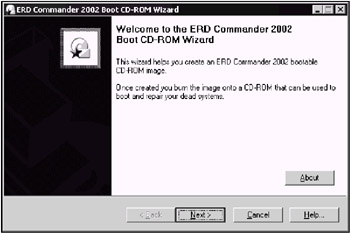
Figure 14.8: Welcome screen of the ERD Commander 2002 Setup program

Figure 14.9: The Password Protection screen of the ERD Commander 2002 Boot CD-ROM Wizard
After you carry out these basic steps, ERD Commander 2002 Boot CD-ROM Wizard extracts all files required to build a bootable CD image (Fig. 14.10). Note that the newest release of this program doesn't require the distribution CD for this purpose (in contrast to the previous version, ERD Commander 2000, which did). After this operation is completed, the Wizard will provide you with the option to include OEM drivers for SCSI devices that Windows XP doesn't support automatically. Finally, the Wizard will provide you with the option of including additional files in the bootable CD image (Fig. 14.11).
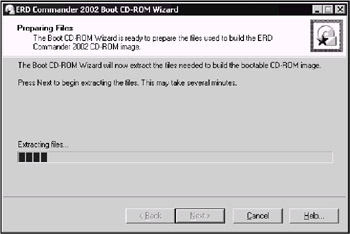
Figure 14.10: ERD Commander 2002 Boot CD-ROM Wizard extracts files needed to build the bootable CD image
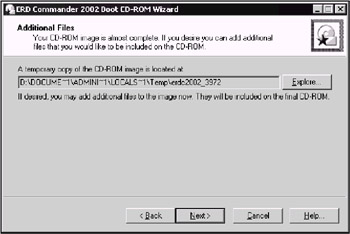
Figure 14.11: The Additional Files dialog of the ERD Commander 2002 Boot CD-ROM Wizard
At the final interactive step, the Boot CD-ROM Wizard will prompt you to specify the destination directory where it will store the generated ISO image (Fig. 14.12). The image usually requires approximately 180 MB of disk storage space (though it will be more, if you choose to include additional files). Since most popular CD-ROM-burning software requires ISO images to have the ISO filename extension, the Boot CD-ROM Wizard also requires that extension.
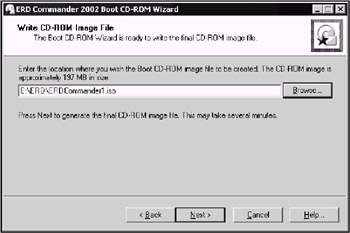
Figure 14.12: The final interactive step of the Boot CD-ROM Wizard
After you carry out all of the steps, click Next, and the wizard will create the bootable CD image. When the Boot CD image has been successfully created, you will need to use your regular CD-ROM-burning software to create an ERD Commander 2002 bootable CD, which you will be able to use when repairing and recovering your damaged systems.
To perform recovery procedures if your Windows NT-based system cannot start, proceed as follows:
-
Insert the ERD Commander 2002 bootable CD into the CD-ROM drive on the target system and reboot the computer. When the message prompting you to press any key to boot from CD appears, press any key, and ERD Commander 2002 will start booting. Once the ERD Commander 2002 boots, it will load a stripped version of Windows XP (Fig. 14.16). Note that, at this stage, it verifies NTFS compatiblity, as shown on the screenshot in Fig. 14.13. As was mentioned earlier, if your target system runs Windows NT 4.0 without SP 4, ERD Commander 2002 will prompt you to update your NTFS volumes.
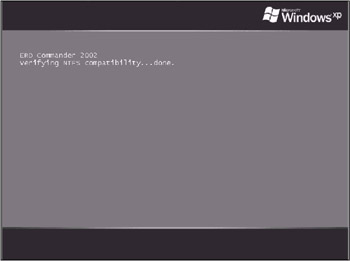
Figure 14.13: ERD Commander 2002 loads a stripped version of Windows XPNote ERD Commander 2002 can access any Windows NT/2000/XP file system, including FAT, FAT32, NTFS, and CDFS. It will also provide you access to the drives of Windows 9x/ME systems (although most of its administrative tools will not function when accessing installations of those operating systems). Also note that ERD Commander 2002 is not intended to solve the problems caused by disk corruption and, therefore, only disks that are consistent enough to be recognized by Windows NT/2000/XP will be accessible. Thus, if your problem is caused by disk corruption, it is recommended that you use other utilities, for example, Disk Commander (also product of Winternals Software).
-
After the stripped Windows XP version loads, ERD Commander 2002 will detect the existing installations (Fig. 14.14). You will likely immediately notice that this function is similar to that of Recovery Console. However, it provides additional capabilities, as well as standard windowing GUI. And, as was already mentioned, although it is officially designed for Windows NT/2000/XP, it also detects Windows Server 2003 installations and works just fine with them.
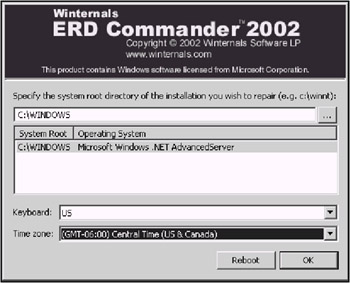
Figure 14.14: ERD Commander 2002 prompts to specify the installation that you wish to repair -
After you choose the damaged installation that you need to repair, ERD Commander 2002 will provide you with a comprehensive set of tools for repairing the damaged system (Fig. 14.15). However, it is important to be aware of the fact that, although it looks similar, this GUI is not the same as the Windows XP code. For example, it is not designed as a general-purpose OS (doing so would be a violation of the end-user license agreement). The environment is designed in such a way as to reboot automatically after 24 hours of continuous usage. Also, do not remove the ERD Commander 2002 CD from the CD-ROM drive while ERD Commander 2002 is running, since doing so will lock-up the environment and make a reboot necessary.

Figure 14.15: ERD Commander provides a comprehensive set of tools for repairing damaged installations of all Windows NT-based systems
A brief glance at the screenshot shown in Fig. 14.15 confirms that the set of capabilities provided by ERD Commander 2002 would impress even those individuals with the wildest of imaginations.
ERD Commander's built-in tools allow you to perform the following tasks:
-
Removing or replacing incomatible device drivers.
-
Updating obsolete system files.
-
Correcting misconfigured NTFS security.
-
Updating Locked Files.
-
Correcting Registry Problems. As outlined throughout this book, a significant number of boot problems are caused by improperly configured registry values. The built-in Registry Editor included with ERD Commander 2002 (Fig. 14.16) has all the capabilities and even the same interface as Windows NT/2000/XP Regedit.exe utility.
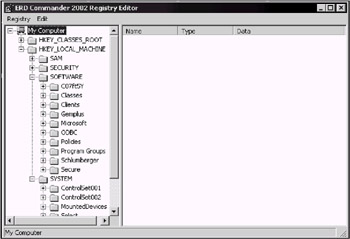
Figure 14.16: ERD Commander 2002 provides Registry Editor with the same user interface and the same capabilities and the Windows NT/2000/XP Regedit.exe tool -
Rescuing critically important data from a failed system. Beside the possibility to copy data to removable media, ERD Commander 2002 provides network capabilities, which allow you to copy the data to another system on your network.
-
Regaining access to the system from which you have been locked out. Have you (or your users) ever forgotten passwords? Or have you ever encountered a situation where you had to administer computers running Windows NT-based operating systems for which you don't know the Administrator password because one of the company's employees has left suddenly? If so, you will appreciate the Locksmith Wizard tool included with ERD Commander 2002 (Fig. 14.17), which provides an easy way of listing all local accounts for a system running Windows NT/2000/XP or Windows Server 2003, and change the password for any of these accounts, including Administrator.
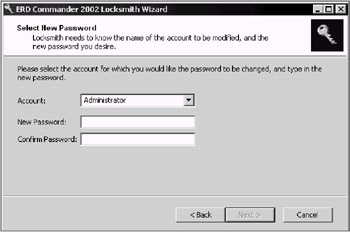
Figure 14.17: Locksmith Wizard tool included with ERD Commander 2002 provides the easiest way of changing the password for any user accountNote Of course, this method of resetting forgotten passwords is not the only one. For example, Windows XP includes a built-in function for resetting forgotten passwords by means of using the password-reset diskette (the procedures are slightly different for Windows XP Professional workstations that are not members of a domain and Windows XP Professional workstations that are joined to a domain). There are other methods of resetting passwords for practically every Windows NT-based operating system, such as replacing SAM, using the system shedule (AT) service, using password-cracking utilities (such as L0phtcrack, which was briefly covered in Chapter 9) and so on. There are also many freeware utilities on the Internet (to download one of them, visit http://home.eunet.no/~pnordahl/ntpasswd/). The method provided by ERD Commander 2002, however, is the easiest, and has the fewest limitations. Just one final note about ERD Commander 2002 boot CD—store it in a safe place, and remember that there is no security except physical security.
-
Viewing the Event Logs—ERD Commander 2002 includes the Event Log Viewer tool with the same interface as the Event Log Viewer MMC snap-in. This is a significant advantage over the Recovery Console, since Event Log records often contain valuable clues that will be helpful in detecting the cause of particular problem.
-
Very powerful recovery capabilities, providing you with access to fault-tolerant drives (including mirror sets, volume sets, and striped sets). And, of course, you can run Chkdsk.exe uitility on corrupt drives.
-
Enabling and Disabling Services and Drivers.
|
|